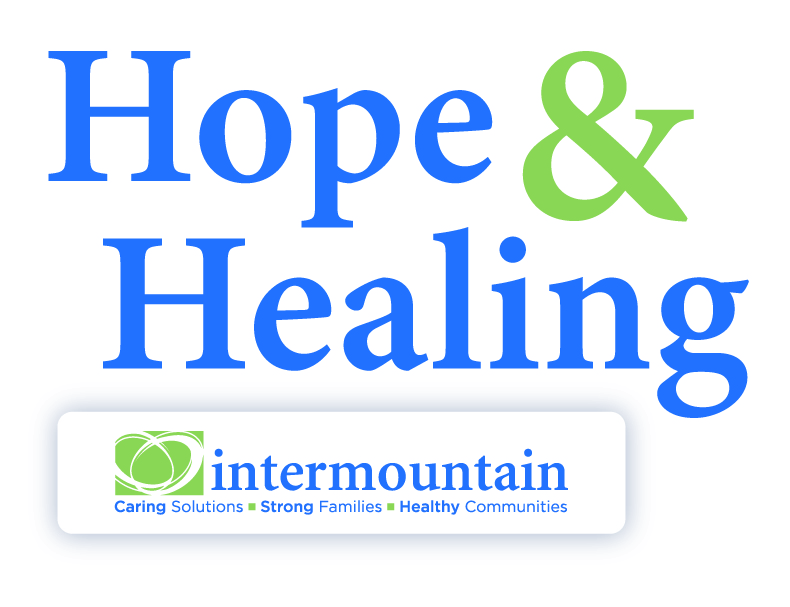By Lora Cowee, MPA, Chief Operations Officer, Intermountain
The last time I caught a cold, after the first three days I thought I was feeling better. I was wrong. That “cold” continued to hang on until I was coughing so much I couldn’t sleep or sit through a meeting. I ended up going to the doctor to find out I had bronchitis and needed more help to beat what started as a simple cold. It was like that television commercial with the green glob of mucus who sets up residence in your lungs.
After finally getting over this illness, I began to reflect on was going on in my life right around the time I first became sick. I had been “burning the candle at both ends” and if I was completely honest, I was not only stressed but also depressed. Once I had the cold, I ended up getting further behind on the things that were stressing me out and then when I couldn’t beat it, it felt like life was unraveling a little bit. Sound familiar to you?
Most primary care providers will tell you that if you can deal with your mental and emotional health, you can prevent many of the physical health issues that require a physician. The research backs that up. The impacts to your behavioral health go beyond the common cold or flu. The Adverse Childhood Experiences (ACE) study connects your future health to adversity in your childhood. Did you live in a household where a member was an alcoholic? Did your parents’ divorce? Did you grow up living with an adult that ever suffered from depression or anxiety? The more of these adversities you experience the more likely you are to develop a disease that is one of the top ten causes of death in America. It is clear that we can’t continue as a nation to separate primary medical health from behavior health, yet that is how most healthcare systems are structured both in the provision of care and in funding. This is true for adult healthcare, but it is even more important to healthcare for children and adolescents.
The green glob television commercial should start with a person stressed out and overwhelmed emotionally. Like a positively charged magnet, stress and mental fatigue attract the green glob to the stressed person while others who are more sanguine, imperturbable and happy seem to repel the green glob like magnetic repulsion. Such an ad would demonstrate the need for integrated primary and behavioral healthcare.
So how do we get Montana there? It will take a big effort and major changes to the health care system structure and funding. But let’s simplify the issue by ignoring, for the moment, the government and insurance industry side of things and focusing on just the provision of care. Because here, the solution begins with just three ingredients: technology, integration/partnerships/mergers, emphasis on outcomes.
Most primary health care providers are already using many technological advances in the field along with electronic medical records (EMR) that enable the continuity of care across providers. The behavioral healthcare field is beginning this transition; larger behavioral health care providers have EMRs as do providers who are already a designated hospital and have a medical focus for treatment. Electronic Medical Records enable providers to integrate and coordinate a client’s care. This happens with medical care providers, but rarely between medical and behavioral health care providers. If we want to address the needs of clients and treat their whole health, this is a good place to begin.
Providers of medical and behavioral healthcare will also need to form partnerships, merge, or look to integrate in ways like co-locating services. The more we can provide one stop shopping for clients and make access to care easier, the healthier we will find clients can become. Technology plays a part through things like telemedicine to expand the reach of providers, especially helping in rural areas without services. There are many innovative ways that providers are using to reach clients and integrate care. Some medical and behavior health providers have started locating clinics near schools or even within a schools to offer an array of services from primary care to behavioral health. Clients are able to get help getting their teeth cleaned, seeing a medical provider when they are sick, having therapy with substance abuse outpatient therapist-all right where they go to school. It is all possible through partnerships and finding new ways to integrate service providers into one location.
In the healthcare field, insurance systems continue to move towards paying for outcomes as opposed to simply paying for a services provided. Some states have seen great results with a “pay-for-value” system for medical providers. In the Chicago area, one system pays medical providers based on the impact of wellness or compliance to treatment interventions of their clients. The dramatic results include an increase in medication compliance with diabetic and heart patients and a decrease in the severity of patient issues and problems. They used target population management in identifying high risk patients to focus the provider interventions and delivered integrated care that included a primary health provider, mental health provider, in home health nurse, case manager, and pharmacy. Outcomes for this group in the lowest socioeconomic areas in Chicago have been high. Some areas perform even better than the higher socioeconomic suburban areas.
When we focus on the whole person’s emotional and physical wellbeing, it is amazing what results we are able to achieve! Creating a community for children and families that repels illness and disease like magnetic repulsion is possible when emotional health is being addressed not only when the green glob is setting up camp, but before he ever comes to town!




